Mastering Off-Grid Living: Essential Tips for a Sustainable Lifestyle
Are YOU Ready to Master Off-Grid Living?
Here’s our Essential Tips for a Sustainable Lifestyle.
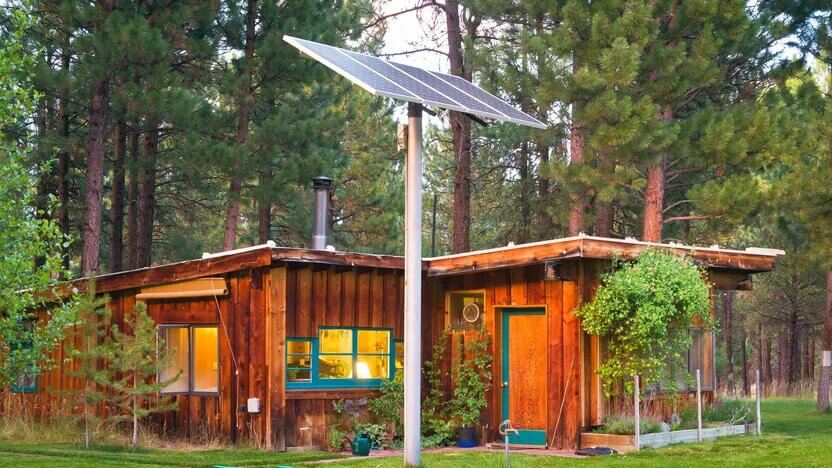
In an increasingly interconnected world, there exists a serene and transformative path less traveled—one that leads to a life of self-sufficiency, harmony with nature, and a reduced ecological footprint. Welcome to the realm of off-grid living, where the modern pioneer embraces a lifestyle that not only liberates from the constraints of urban existence but also cultivates a deep and meaningful connection with the environment.
Mastering off-grid living is a journey that beckons those seeking a more sustainable way of life—one that embodies resilience, innovation, and a profound respect for the planet we call home. In this guide, we’ll embark on an exploration of essential tips and strategies that illuminate the path to a self-sustaining existence, inviting you to navigate the challenges and embrace the rewards of living off the grid.
From harnessing renewable energy sources and designing efficient structures to cultivating your own food and managing precious resources, we’ll delve into the fundamental pillars of off-grid mastery. Each step along this extraordinary journey holds the promise of a simpler, more intentional existence, where the hum of solar panels, the rustle of wind turbines, and the vitality of a thriving garden paint a picture of an existence uniquely intertwined with nature.
As we traverse the intricacies of choosing the right location, delving into alternative energy systems, and perfecting the art of waste management, we’ll uncover the wisdom of generations past and the innovative solutions shaping the off-grid landscape of today. Whether you’re a curious wanderer or a determined trailblazer, the insights shared within these pages will empower you to forge your path to a sustainable and rewarding off-grid lifestyle.
So, join us on this illuminating journey—one that leads to mastering the art of off-grid living, fostering a balanced coexistence with the Earth, and discovering the profound fulfillment that arises from crafting your haven amidst the natural rhythms of the world.
Want Us To Show You Our Complete Cabin Build Instructions & Costs?
You can grab our complete floor plans, materials list, cost list and a step-by-step build list as a THANK YOU for just or dropping by and checking us out!
1 Choosing the Right Location
Evaluating the landscape and climate
1. Considerations for building structures and energy sources
Creating successful off-grid living involves two fundamental considerations: designing resilient structures and selecting appropriate energy sources. Off-grid building structures should prioritize passive solar design, insulation, sustainable materials, durability against weather and hazards, efficient water collection and waste management. Meanwhile, choosing off-grid energy sources requires evaluating solar, wind, and hydroelectric potential, incorporating backup generators, optimizing energy storage, and emphasizing energy-efficient practices. Combining thoughtful building design with strategic energy choices lays the groundwork for a sustainable and self-sufficient off-grid lifestyle.
2. Adapting to seasonal changes and extreme weather conditions
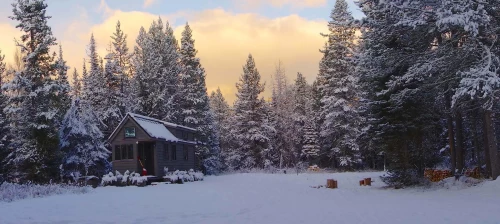
Adapting to the ebb and flow of seasonal changes and unpredictable weather conditions is a cornerstone of successful off-grid living. Embracing the rhythm of nature involves preparing for temperature fluctuations, managing energy and water resources during inclement weather, fortifying structures to withstand storms, and adjusting daily routines to align with the changing environment. From optimizing energy storage and conservation strategies for cloudy days to implementing effective insulation and heating solutions for winter, mastering the art of seasonal adaptation ensures a resilient, comfortable, and harmonious off-grid lifestyle throughout the year.
Legal and regulatory considerations
1. Zoning laws and building codes
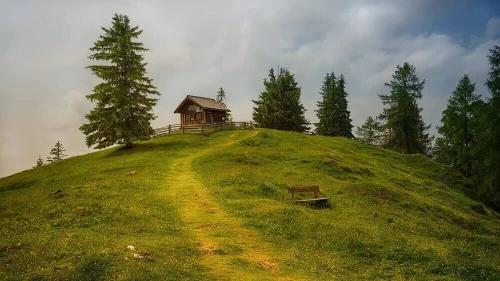
Navigating zoning laws and building codes is a pivotal aspect of off-grid living, shaping the feasibility and legality of your self-sufficient haven. We covered this in our “6 Must Know Tips For How to Buy Off Grid Land“. Understanding local regulations is essential, as they influence site selection, structure design, and utility systems. While some areas may embrace off-grid practices, others might have strict requirements that impact renewable energy installations, water sources, waste disposal methods, and even architectural choices. Balancing your off-grid aspirations with legal compliance ensures a smooth journey toward sustainable living while fostering harmonious relationships with neighboring communities and regulatory authorities.
2. Obtaining necessary permits for construction and land use
Securing necessary permits for construction and land use is a pivotal step in the off-grid journey, ensuring both compliance with local regulations and the realization of your sustainable vision. Obtaining permits involves a comprehensive understanding of zoning laws, building codes, environmental impact assessments, and health and safety considerations. Whether for erecting off-grid structures, installing renewable energy systems, or establishing water and waste solutions, the permitting process requires meticulous planning, transparent communication with authorities, and a commitment to aligning your aspirations with legal parameters. By diligently navigating this bureaucratic landscape, you lay a solid foundation for a harmonious and enduring off-grid lifestyle while fostering a cooperative relationship with the community and regulatory entities.
You might want to check out how we saved $20,000 when buying our off grid property “Cheap off grid land for half price”
DISCLAIMER: We’re not off grid house building experts. We’re off grid house building enthusiasts. the info we share may be different in your neck of the woods to always DYOR when it comes to the rules and regulations in your area(s).
2 Energy Independence: Harnessing Renewable Sources
Solar power installation
1. Calculating energy needs and designing a solar system
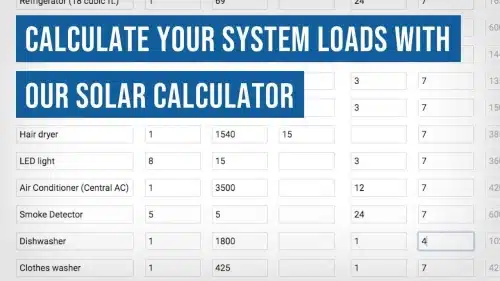
Accurately calculating energy needs and skillfully designing a solar system are vital steps in the off-grid journey, ensuring a consistent and sustainable power supply. The process involves assessing daily energy consumption patterns, accounting for seasonal variations, and factoring in the efficiency of appliances and systems. This data informs the selection of solar panels, determining their capacity and arrangement to optimize energy production. Coupled with battery storage and an effective charge controller, a well-designed solar system not only meets your energy demands but also fosters independence from external grids, enabling you to thrive amidst the beauty and challenges of off-grid living.
2. Maintenance and optimization of solar panels
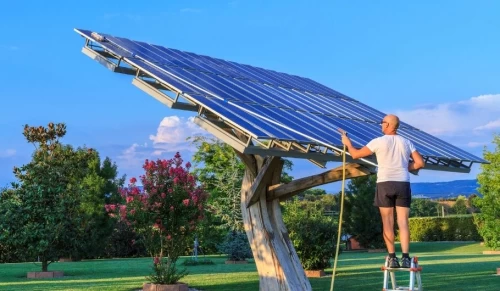
The maintenance and optimization of solar panels form a critical pillar of successful off-grid living, ensuring sustained energy generation and self-sufficiency. Regular maintenance involves cleaning panels to maximize sunlight absorption, inspecting connections for wear, and promptly addressing any malfunctions. Additionally, optimizing panel placement and angles based on seasonal sun paths enhances energy output. By cultivating a proactive approach to panel care and periodically evaluating their performance, you guarantee the longevity and efficiency of your solar system, empowering a seamless and reliable off-grid lifestyle powered by the sun’s abundant energy. I use this Roof Rake we got from Amazon to remove the majority of the snow in winter and our black solar panels then usually heat up enough during the daytime to melt whatever dusting of snow is left.
Wind power potential
1. Assessing wind patterns and feasibility
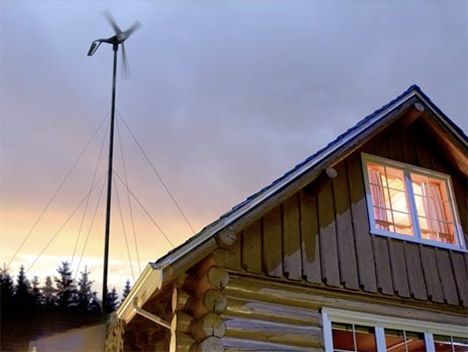
Assessing wind patterns and feasibility is a pivotal step in crafting a resilient off-grid lifestyle, particularly for harnessing wind energy. Understanding local wind dynamics involves analyzing prevailing directions, speeds, and seasonal variations. This assessment guides the optimal placement and sizing of wind turbines, ensuring efficient energy generation and reducing reliance on alternative sources during low-wind periods. By aligning your off-grid energy strategy with the natural rhythm of wind patterns, you establish a sustainable and dynamic power source that complements your self-sufficient journey while minimizing environmental impact.
2. Advantages and limitations of wind turbines
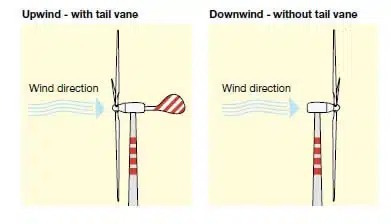
Wind turbines offer both promising advantages and inherent limitations for off-grid living. On the upside, they harness a renewable and abundant energy source, contributing to reduced reliance on non-renewable fuels and lowering environmental impact. Wind power can provide consistent energy generation, particularly in regions with steady wind patterns, enabling greater self-sufficiency. However, limitations include the need for careful site selection and wind assessment, as inconsistent or turbulent winds can affect energy output. Maintenance requirements and potential noise concerns are other factors to consider. Balancing these benefits with challenges, wind turbines can be a valuable component of an integrated and diversified off-grid energy strategy, amplifying sustainability while demanding strategic planning and vigilant management.
Hydroelectricity options
1. Utilizing flowing water for power generation
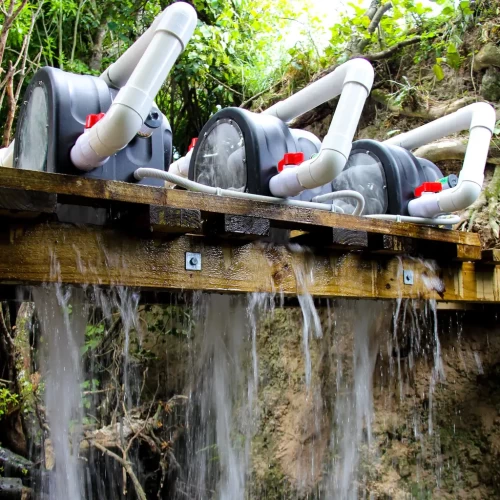
Leveraging the power of flowing water for energy generation holds immense potential for off-grid living. By harnessing the kinetic energy of streams or rivers, hydroelectric systems can provide a consistent and renewable source of electricity. This approach offers reliability independent of weather conditions, contributing to enhanced self-sufficiency. However, successful implementation requires meticulous evaluation of water flow rates, site terrain, and environmental considerations. While offering an eco-friendly energy solution, hydroelectric power necessitates careful planning to minimize ecological impact and optimize power output, exemplifying the synergy between sustainable living and harmonious interaction with the natural world.
2. Environmental impact and setup considerations
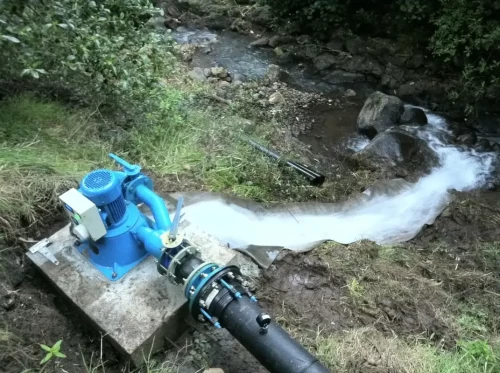
The pursuit of hydroelectricity for off-grid living involves a dual focus on harnessing renewable energy and minimizing environmental impact. While hydroelectric systems offer a reliable and sustainable energy source, their setup demands thoughtful consideration of ecological factors. Striking a balance between energy generation and preservation of aquatic ecosystems is paramount. Thorough site assessments are crucial to ensure minimal disruption to water flow, aquatic habitats, and fish migration patterns. Implementing fish-friendly turbine designs, incorporating fish ladders or bypass systems, and maintaining water quality are essential steps in mitigating the environmental consequences of hydroelectric installations. By adopting a holistic approach that respects the delicate balance of nature, off-grid enthusiasts can optimize the benefits of hydroelectricity while nurturing the health and vitality of surrounding environments.
3 Water Management and Conservation
Collecting rainwater
1. Setting up rain barrels or cisterns
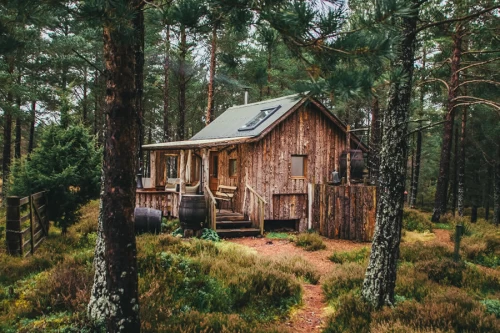
Installing rain barrels or cisterns is a fundamental practice in off-grid living, enabling efficient water conservation and management. These systems collect and store rainwater, offering a sustainable source for irrigation, sanitation, and even potable use. By capturing and storing rainfall, off-grid enthusiasts reduce dependency on external water sources and minimize their ecological footprint. Careful consideration of placement, sizing, and filtration ensures the quality and accessibility of harvested rainwater. These setups empower individuals to embrace self-sufficiency, embrace resourcefulness, and contribute to a more sustainable and resilient off-grid lifestyle. A handy method to drain the bottom of your rain barrels to give them a good cleaning is this small water pump drill attachment and a short section of garden hose.
2. Filtration and purification methods
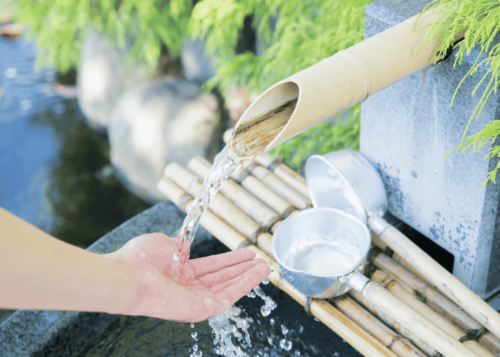
Water filtration and purification methods are essential components of off-grid living, guaranteeing a safe and reliable water supply. Off-grid enthusiasts rely on a variety of techniques, such as gravity-fed filters, UV sterilization, and chemical treatments, to remove contaminants and pathogens from water sources. Implementing an effective filtration system tailored to local conditions ensures potable water quality, safeguards health, and enhances self-sufficiency. Regular maintenance and vigilant monitoring are key to sustaining these systems, empowering individuals to embrace the independence and resilience that come with skillful water management in the context of off-grid living.
Sustainable water usage
1. Implementing efficient water fixtures and appliances
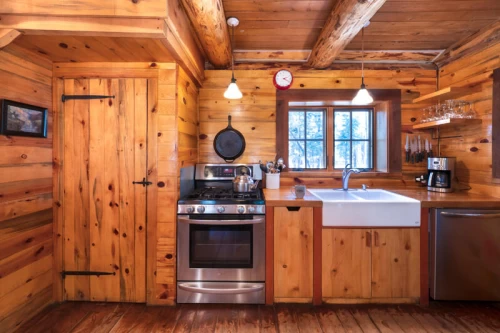
Implementing efficient water fixtures and appliances stands as a cornerstone of off-grid living, optimizing resource usage and sustainability. By selecting low-flow faucets, showers, and water-saving appliances, off-grid enthusiasts minimize water consumption and reduce strain on limited resources. These measures not only contribute to a smaller ecological footprint but also extend the availability of stored water. Furthermore, integrating graywater recycling systems repurposes wastewater for irrigation, amplifying the efficiency of water use. Thoughtful consideration of water-efficient technologies empowers individuals to embrace a responsible and self-sufficient off-grid lifestyle, aligning their practices with environmental stewardship and sustainable living principles.
2. Greywater recycling for irrigation and other purposes
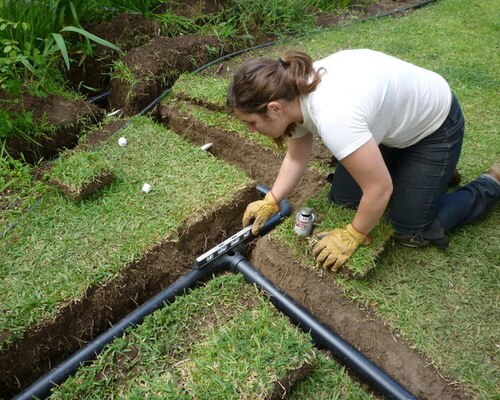
Greywater recycling, a pivotal practice in off-grid living, transforms wastewater into a valuable resource, enhancing self-sufficiency and sustainability. By diverting and treating non-toilet wastewater from sinks, showers, and laundry, greywater systems channel this water towards irrigation, landscaping, and other non-potable uses. This practice not only conserves precious water resources but also nurtures soil and plant health through nutrient-rich moisture. Successful implementation demands careful design, filtration, and adherence to safety guidelines to ensure that recycled water is appropriate for its intended purposes. Embracing greywater recycling exemplifies the ingenuity and commitment of off-grid enthusiasts, forging a resilient path towards responsible water management and a harmonious coexistence with nature.
4 Building Efficient and Eco-Friendly Structures
Sustainable building materials
1. Exploring options like cob, straw bale, or recycled materials
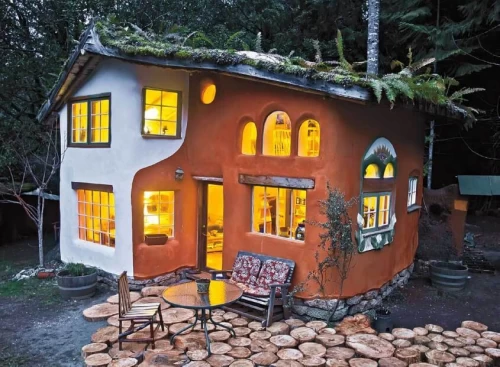
Exploring alternative building options like cob, straw bale, or recycled materials epitomizes the spirit of innovation and sustainability in off-grid living. These unconventional construction methods offer eco-friendly and resource-efficient alternatives to conventional building materials. Cob, a mixture of clay, sand, and straw, provides thermal mass and sculptural freedom, while straw bale construction offers excellent insulation and reduces environmental impact. Incorporating recycled materials such as reclaimed wood, salvaged windows, and repurposed metals not only minimizes waste but also adds unique character to off-grid structures. By embracing these creative alternatives, off-grid enthusiasts weave together architecture, environmental consciousness, and a profound connection to the natural world, fostering a distinctive and responsible way of building and living.
2. Benefits of using locally sourced materials
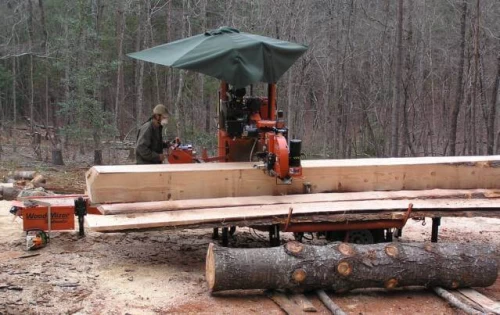
Utilizing locally sourced materials in off-grid living presents a multitude of benefits that extend beyond sustainability. By choosing materials found in the immediate surroundings, off-grid enthusiasts reduce transportation emissions, support local economies, and foster a sense of community resilience. Moreover, using indigenous resources ensures a harmonious integration of structures with the natural landscape and climate, enhancing energy efficiency and adaptability. This practice also encourages a deeper connection to the land, preserving cultural heritage and promoting a holistic approach to self-sufficiency. Through the choice of locally sourced materials, off-grid living becomes a tangible embodiment of environmental stewardship, mindful consumption, and a strong bond between individuals and their surroundings. We picked up an EGO cordless chainsaw this past summer and charge it up using only solar. It easily meets all our firewood and property clearing needs. Highly recommend Ego for a cordless chainsaw and will definitely do a write up about it shortly!
Designing for energy efficiency
1. Passive solar design principles
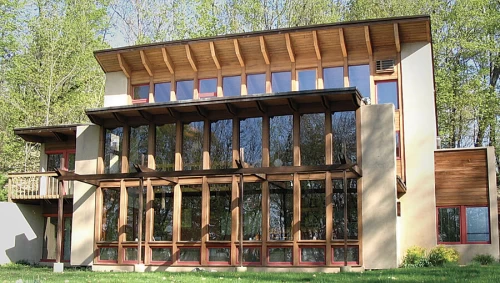
Passive solar design principles lie at the heart of efficient and sustainable off-grid living, harnessing the sun’s energy for natural heating, cooling, and lighting. By strategically orienting structures, maximizing south-facing windows, and using thermal mass like stone or concrete, passive solar design optimizes solar gain during colder months and minimizes heat gain in warmer periods. This intelligent integration of architecture and solar dynamics reduces reliance on mechanical systems, conserves energy, and enhances indoor comfort. In embracing passive solar strategies, off-grid enthusiasts forge a profound connection with nature, harnessing its elements to create a harmonious and resilient living environment that embodies the essence of sustainable self-sufficiency.
2. Insulation techniques for different climates
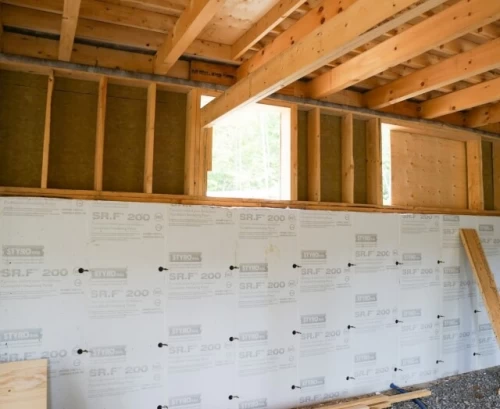
Insulation techniques tailored to different climates play a pivotal role in off-grid living, ensuring optimal comfort and energy efficiency. We went with a sandwiched floor here in Nova Scotia. Despite the frigid winters the “thermal break” of the Styrofoam sandwiched between the plywood layers is more than enough to keep the entire cabin highly insulated and warm all winter long. Here’s “How to build the best foundation for an off grid cabin“. In colder climates, thick insulation layers, double-glazed windows, and airtight construction create a well-insulated envelope that retains heat and minimizes energy loss. Conversely, in hot climates, reflective roofing materials, shading devices, and strategic ventilation keep indoor spaces cool and reduce reliance on cooling systems. By adapting insulation methods to the specific demands of each climate, off-grid enthusiasts create resilient and cozy living spaces that maximize resource use, foster sustainability, and embody the art of harmonious coexistence with the surrounding environment.
5 Food Production and Preservation
Off-grid gardening
1. Choosing crops suited for the climate
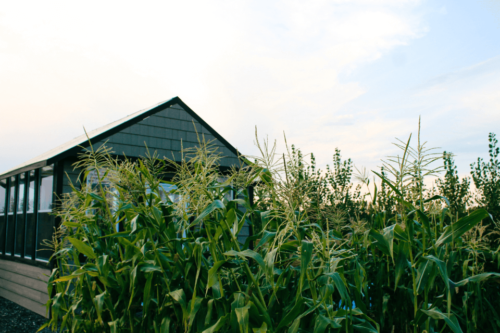
Selecting crops suited for the climate is a fundamental aspect of thriving off-grid agriculture, fostering a self-sustaining food supply. This practice involves a deep understanding of local temperature ranges, frost dates, and soil conditions to determine which vegetables, fruits, and herbs flourish in a particular environment. By embracing climate-appropriate crop choices, off-grid gardeners optimize yields, conserve water, and reduce the need for synthetic inputs. This alignment between nature’s rhythms and cultivated harvests not only enhances self-reliance but also honors the intricate interplay between human cultivation and the land, culminating in a truly sustainable and abundant off-grid food production system.
2. Composting and organic soil management
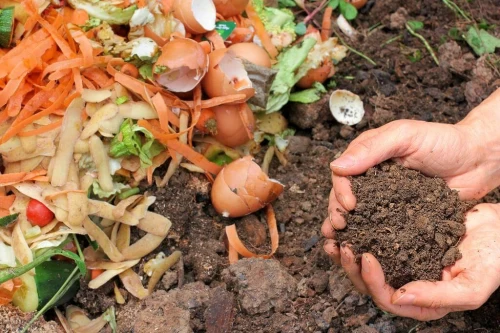
Composting and organic soil management serve as cornerstones of successful off-grid living, nurturing fertile ground for sustainable food production. Through the art of composting, organic matter transforms into nutrient-rich soil amendments that enhance soil structure, water retention, and microbial activity. This practice closes the loop on waste, minimizing disposal while creating a renewable resource for healthy plant growth. Incorporating cover cropping, mulching, and crop rotation further enriches soil health and resilience, reducing the need for external inputs and promoting a harmonious ecosystem. By prioritizing composting and organic soil management, off-grid practitioners cultivate a regenerative relationship with the earth, fostering a bountiful and self-sufficient agricultural paradigm that epitomizes the essence of sustainable living.
Livestock and animal husbandry
1. Raising chickens, goats, or other livestock
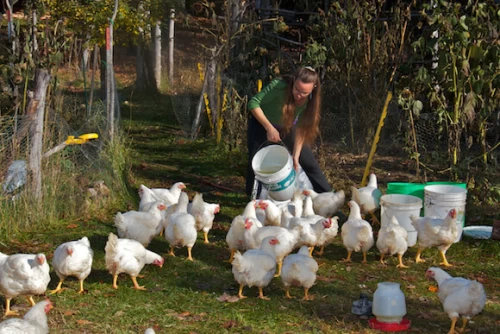
Raising chickens, goats, or other livestock stands as a vital pillar of holistic off-grid living, offering a symbiotic relationship that contributes to self-reliance and sustainability. Chickens provide fresh eggs and natural pest control, while goats yield milk, meat, and valuable manure for compost. These animals help close nutrient loops, converting kitchen scraps and plant waste into valuable resources. By integrating livestock into the off-grid ecosystem, practitioners enhance soil fertility, reduce waste, and establish a diversified food source that embodies the principles of regenerative agriculture. This harmonious interplay between human care and animal well-being fosters resilience, resourcefulness, and a profound connection to the natural world, exemplifying the essence of a self-sufficient and sustainable off-grid lifestyle.
2. Benefits of integrating animals into a self-sustaining system
Integrating animals into a self-sustaining system offers a multitude of benefits that amplify the essence of off-grid living. Animals, such as chickens, goats, or bees, contribute to a balanced ecosystem by providing valuable resources like fresh eggs, milk, honey, and manure that enrich the soil. Their natural behaviors aid in pest control, weed management, and pollination, nurturing a thriving garden and enhancing food production. Moreover, the synergy between plants and animals fosters nutrient cycling, reducing the need for external inputs and creating a closed-loop, regenerative cycle that embodies the principles of sustainability. This harmonious integration of animals into the off-grid landscape not only enhances self-sufficiency but also deepens the connection to nature, offering a tangible and rewarding experience of coexistence with the rhythms of life.
Food preservation methods
1. Canning, drying, and root cellaring
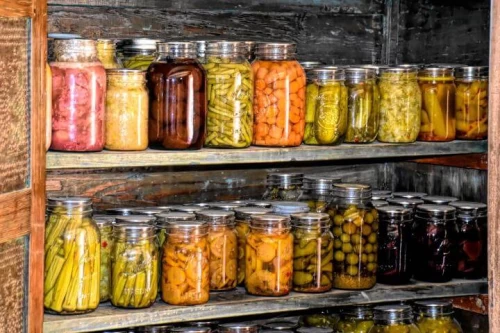
Canning, drying, and root cellaring represent time-honored preservation methods that are essential components of the off-grid lifestyle, ensuring a year-round food supply and minimizing waste. Through canning, fresh produce is sealed in airtight jars, preserving flavors and nutrients for extended periods without refrigeration. Drying involves gently removing moisture from fruits, vegetables, and herbs, creating lightweight and shelf-stable provisions. Root cellaring taps into natural underground temperatures to store crops like potatoes, carrots, and onions, providing a cool and humidity-controlled environment that prolongs their freshness. These techniques not only extend the availability of homegrown harvests but also foster self-sufficiency, reducing dependency on external food sources and embodying the self-reliant spirit of off-grid living. We just started on a path of preserving by means of fermenting. So far we’ve make pickles, sauerkraut, carrots and green beans using this fermenting kit from Amazon.
2. Creating a year-round food supply
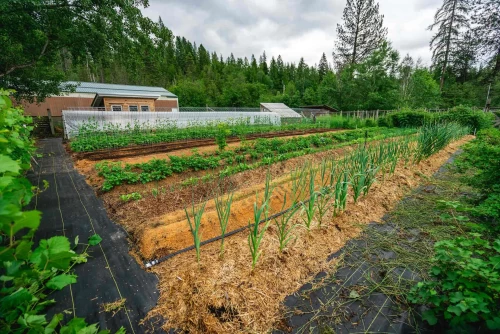
Creating a year-round food supply lies at the heart of sustainable off-grid living, integrating diverse strategies such as gardening, preservation, and animal husbandry. By cultivating a variety of crops suited to local climates and engaging in season-extension techniques like greenhouse gardening or cold frames, off-grid practitioners ensure a continuous harvest. Preservation methods like canning, drying, and root cellaring store the abundance of growing seasons for consumption during winter months. Livestock and poultry contribute to protein and other essential nutrients, complementing homegrown produce. Through the synergy of these practices, off-grid enthusiasts achieve self-sufficiency, resilience, and a deep connection to the land, embodying the essence of a self-sustaining and harmonious way of life.
6 Waste Management and Recycling
Composting systems
1. Setting up compost bins or piles
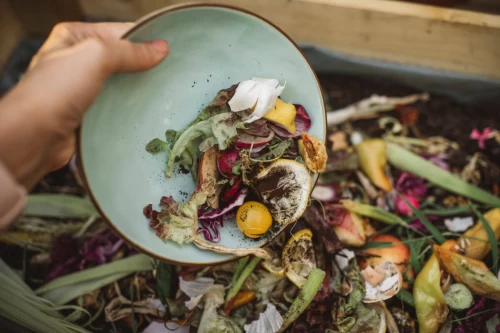
Setting up compost bins or piles is a fundamental practice in off-grid living, fostering resourceful waste management and enhancing soil fertility. Organic kitchen scraps, plant trimmings, and animal bedding are transformed into nutrient-rich compost through natural decomposition. Composting not only diverts waste from landfills but also creates a valuable soil amendment that enriches garden beds and supports healthy plant growth. Proper placement, layering of materials, and occasional turning facilitate the composting process, converting organic matter into a renewable resource that exemplifies the principles of sustainability and self-sufficiency. By harnessing the transformative power of composting, off-grid enthusiasts forge a resilient cycle of nutrient recycling and demonstrate a tangible commitment to environmental stewardship.
2. Utilizing compost for soil enrichment

Utilizing compost for soil enrichment is a cornerstone of successful off-grid living, embodying a closed-loop approach that revitalizes the land and sustains productive ecosystems. Compost, teeming with beneficial microorganisms, improves soil structure, water retention, and nutrient availability, fostering vibrant and resilient garden beds. Its incorporation enhances plant health, bolsters natural pest resistance, and reduces the need for synthetic fertilizers. By seamlessly reintroducing organic matter back into the earth, off-grid practitioners not only nourish the soil but also honor the cyclical harmony of nature. This synergy between composting and soil enrichment exemplifies a regenerative mindset, fostering bountiful harvests and encapsulating the spirit of sustainability in the heart of the off-grid lifestyle.
Recycling and repurposing materials
1. Creative ways to reuse and upcycle items
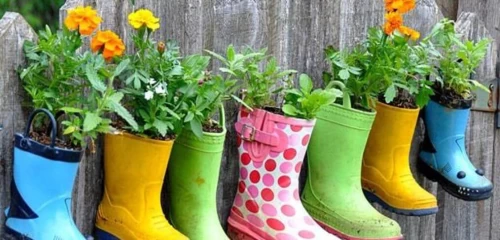
Unleashing ingenuity and resourcefulness, creative ways to reuse and upcycle items become integral to the off-grid ethos, transforming discarded materials into valuable assets. Salvaged wood and reclaimed metals breathe new life into structures and functional pieces, reflecting a commitment to sustainability while adding unique character. Repurposed containers become rainwater catchment systems or storage units, while old windows find purpose as solar dehydrators or greenhouse panels. Upcycled textiles create cozy quilts and clothing, demonstrating a mindful approach to consumption. By embracing these imaginative practices, off-grid enthusiasts weave together innovation, eco-consciousness, and a deep connection to the past, crafting a self-sufficient lifestyle that harmonizes with the rhythms of the natural world.
2. Reducing waste through conscious consumption

Reducing waste through conscious consumption forms the backbone of off-grid living, fostering a mindful and sustainable approach to resource utilization. By thoughtfully assessing needs and prioritizing durable, multipurpose items, off-grid enthusiasts curtail unnecessary purchases and minimize waste accumulation. Embracing practices such as bulk food buying, utilizing cloth alternatives, and repurposing materials cultivates a culture of minimalism and resilience. Each decision to repair, reuse, or repurpose echoes a commitment to environmental stewardship, aligning daily choices with the principles of self-sufficiency and responsible coexistence with the earth. In embracing conscious consumption, off-grid practitioners embody a profound connection between mindful living and the harmony of their surroundings.
7 Emergency Preparedness and Communication
Developing a comprehensive emergency plan
1. Food, water, and medical supplies

Developing a comprehensive emergency plan for food, water, and medical supplies is a fundamental pillar of off-grid living, ensuring resilience and preparedness in times of uncertainty. This strategic blueprint involves stockpiling non-perishable foods, preserved harvests, and essential staples to sustain families during disruptions. Adequate water storage, purification methods, and rainwater catchment systems ensure a consistent water supply. Equally crucial is a well-equipped medical kit, comprising basic necessities and specialized items tailored to individual health needs. By meticulously planning for unforeseen challenges, off-grid practitioners cultivate self-reliance, minimizing vulnerabilities and epitomizing the spirit of proactive and self-sustaining living in any circumstance.
2. Evacuation routes and communication strategies
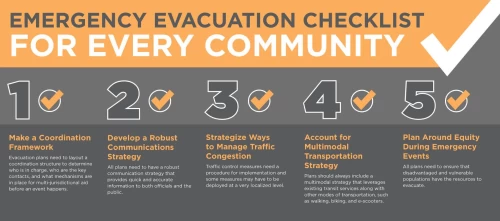
Crafting a comprehensive emergency plan for evacuation routes and communication strategies is paramount in off-grid living, safeguarding individuals and families during unforeseen crises. This multifaceted approach entails mapping out safe evacuation routes, accounting for terrain and potential hazards, to ensure a swift and secure retreat. Establishing communication protocols, including backup methods like two-way radios or satellite devices, facilitates effective coordination with neighbors, local authorities, and support networks. By proactively addressing evacuation needs and bolstering communication, off-grid practitioners foster resilience, adaptability, and a profound commitment to the well-being of themselves and their community, embodying the essence of preparedness in their self-sufficient lifestyle.
Off-grid communication tools
1. Ham radios, satellite phones, and alternative communication methods
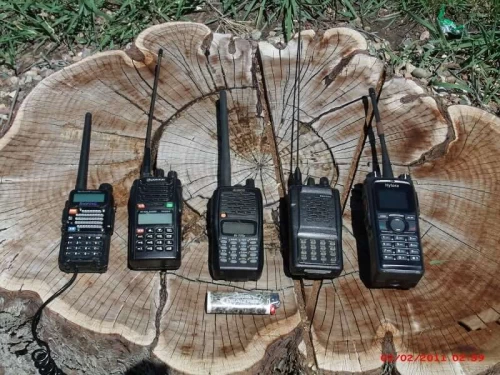
In the realm of off-grid living, embracing alternative communication methods like Ham radios and satellite phones holds paramount importance. Ham radios, renowned for their reliability and long-range capabilities, facilitate vital communication with neighbors and emergency services, even in remote areas lacking cellular coverage. Satellite phones extend this reach, enabling global connectivity through orbiting satellites, making them indispensable for crisis communication. Additionally, alternative methods such as signal mirrors, smoke signals, or messenger pigeons can serve as backup solutions in dire circumstances. By harnessing these diverse communication tools, off-grid enthusiasts forge a lifeline that transcends geographic barriers, ensuring effective information dissemination, community coordination, and safety in the face of uncertainty.
Conclusion
In the tapestry of off-grid living, where self-sufficiency meets harmony with nature, the journey toward a sustainable lifestyle unfolds through a tapestry of essential tips. From harnessing renewable energy to nurturing bountiful gardens, from embracing alternative construction methods to fostering resilient communication strategies, each facet of this holistic endeavor weaves together a narrative of resourcefulness, resilience, and responsible coexistence with our environment. By integrating these practices into the very fabric of our daily lives, we embark on a path that not only empowers us to thrive independently but also inspires a deeper connection to the land and a profound sense of stewardship. As we master the art of off-grid living, we not only shape a self-sustaining existence but also contribute to a legacy of sustainable living for generations to come – a legacy where the footprint we leave is one of mindful choices, thriving ecosystems, and a harmonious equilibrium with the natural world.
Your Turn...
P.S. If you enjoyed this post about Mastering Off-Grid Living: Essential Tips for a Sustainable Lifestyle then why not share it.
Share This Story, Choose Your Platform!
It’s how we keep growing our off grid community here and lets us know we’re posting the right kind of info you’re looking for.
Here’s a special Pinterest PIN for all our Pinterest fans out there!
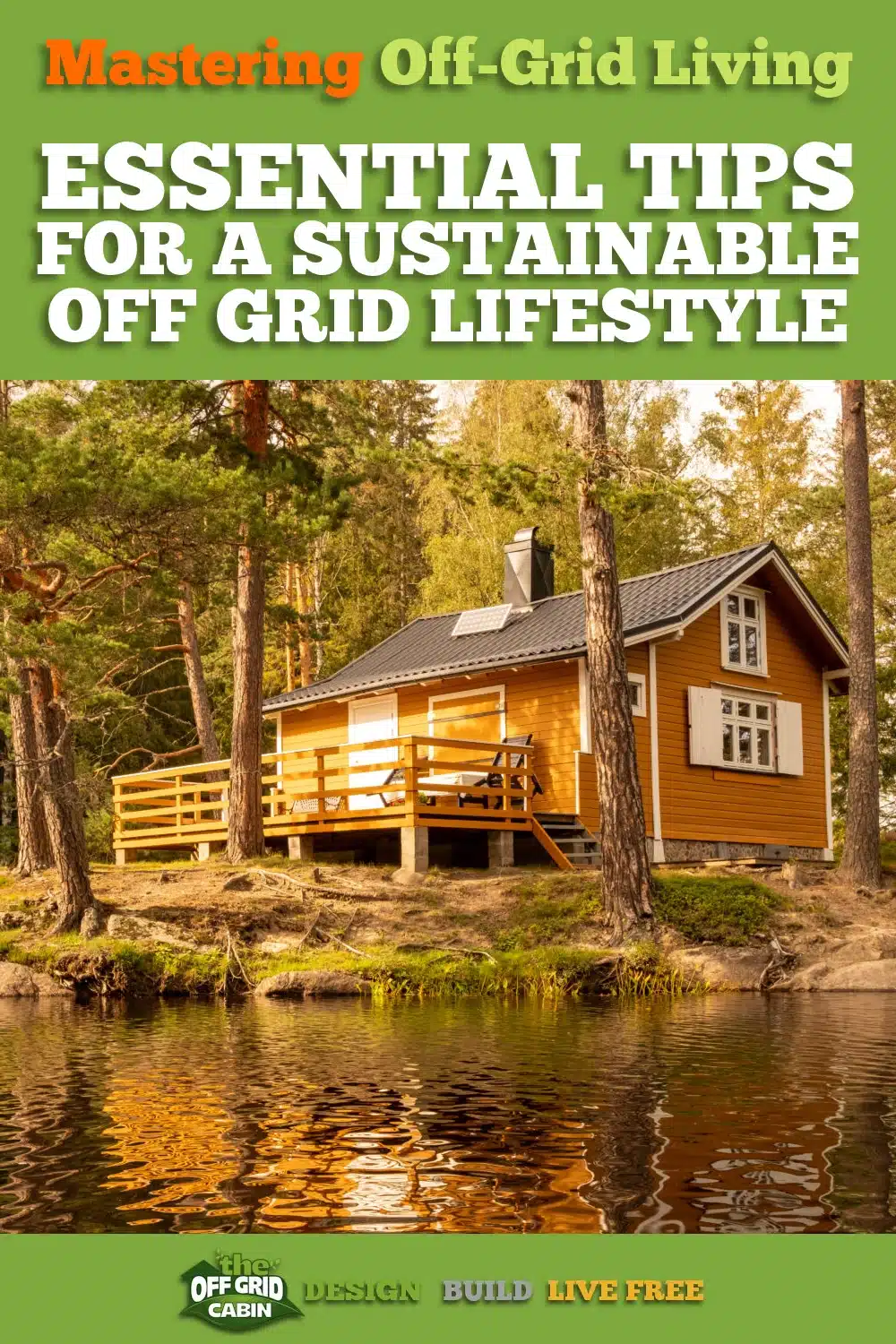
Let us know what you think in the comment section below.
And be sure to join the rest of the off grid community here and follow along with the build of our cabin!
We’ll update the Building The Cabin section every time we complete a new phase of the build so be sure to check in and watch the progression.
how to clean solar panels
How to Clean Solar Panels: A Step-by-Step DIY Guide As you already know, residential and off-grid solar systems are amazing sources of renewable energy that are quickly growing in popularity. The large flat [...]
earthship
What Is an Earthship and How It Can Help Save the Planet Imagine living in a home that is completely self-sufficient, eco-friendly, and comfortable. A home that grows its own food, collects its [...]
3-way-switch-wiring
3-Way Switch Wiring: A How to Comprehensive Guide Here at the off grid cabin we’ve done our fair share of electrical work including 3-way switch wiring. We’ve done all the internal and external [...]
solar generator
How To Find The Best Solar Generator Impact-Site-Verification: c336f89e-c692-4afd-99d9-0150f7329466 When we first cleared the land to build our off grid home back in 2016, we started with one of those small 700 watt [...]
Off Grid Heating
The Best Off Grid Heating Methods Introduction To Off Grid Heating If you're Living off the grid already or planning to in the future, you already know how important it is to have [...]
off grid appliances
The Best Off Grid Appliances for Off Grid Living Introduction To Off Grid Appliances Living off the grid can be a rewarding and fulfilling experience, but it also comes with some challenges. One [...]


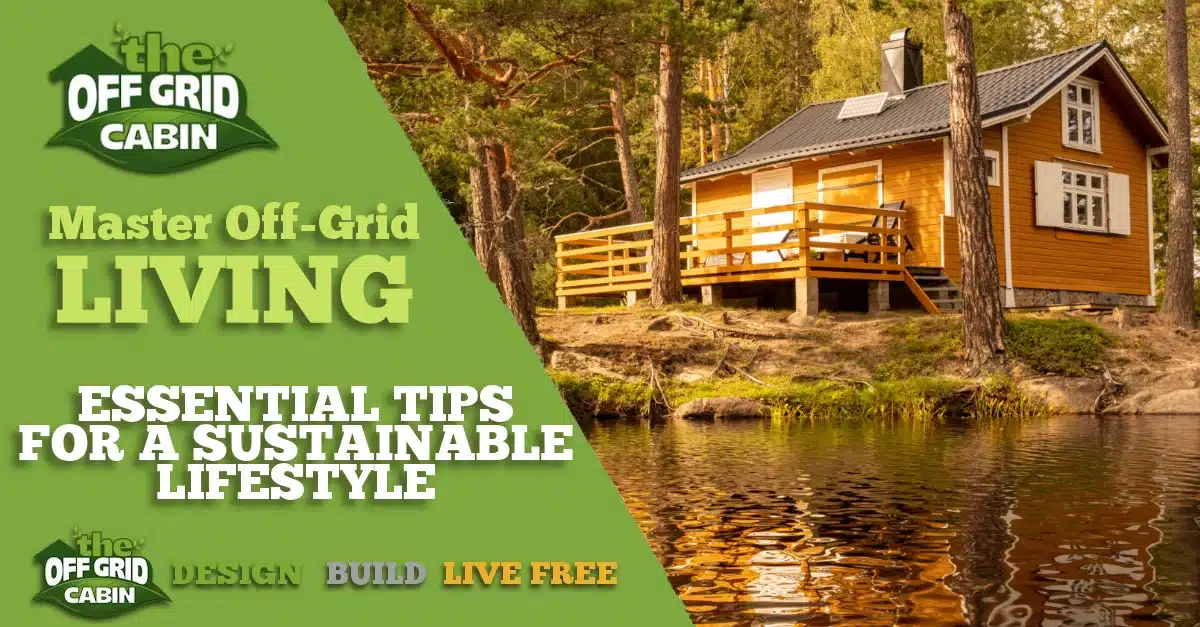
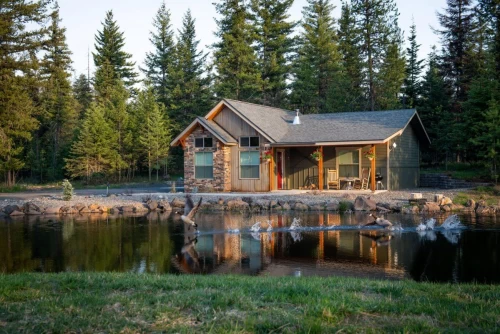
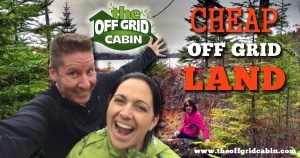
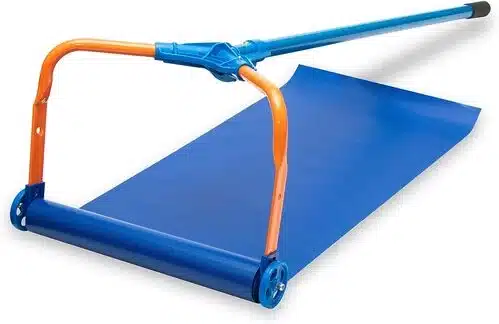
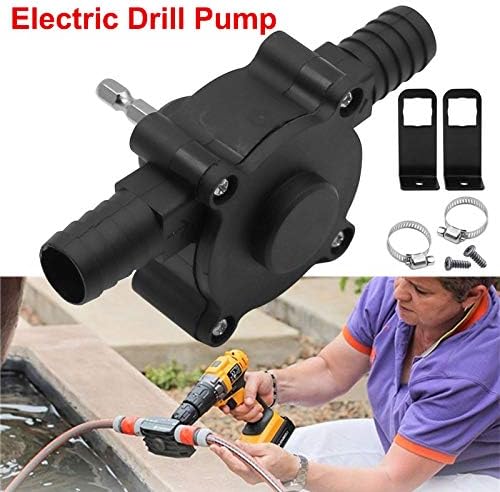
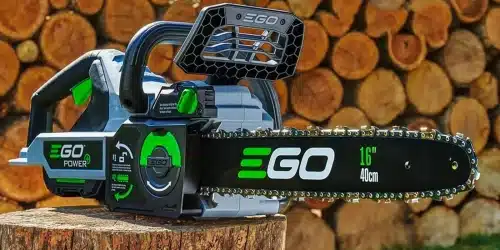


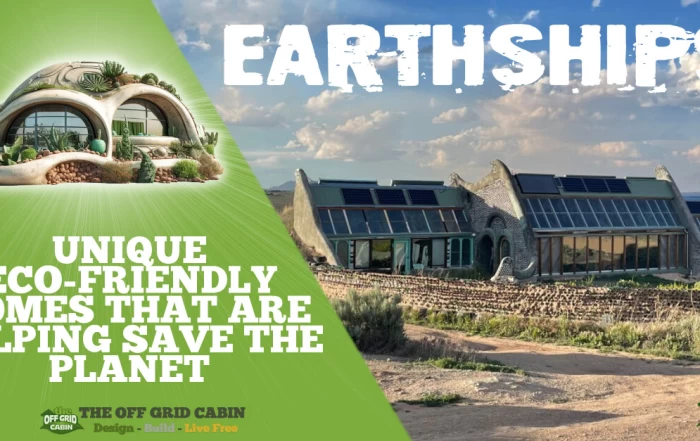

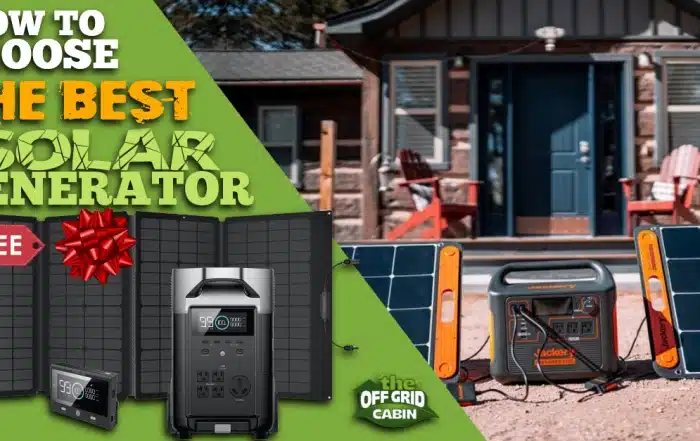

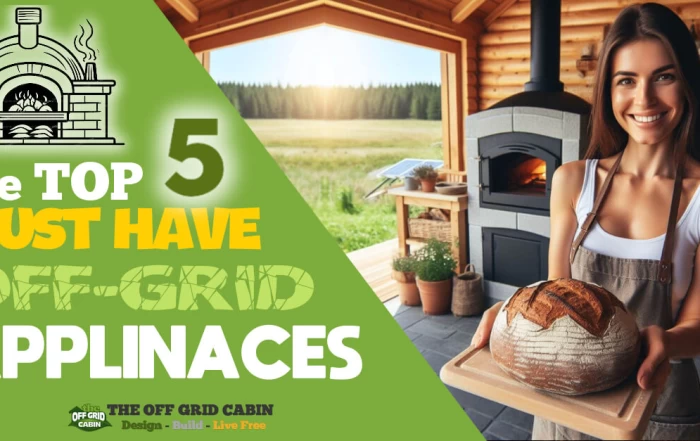
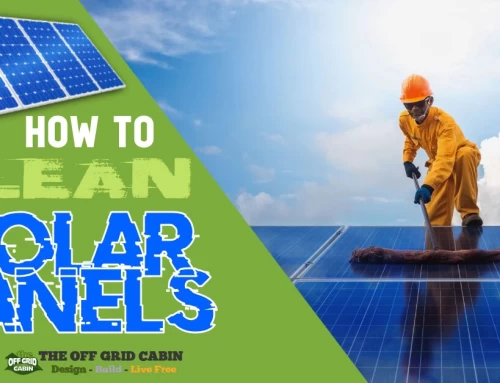
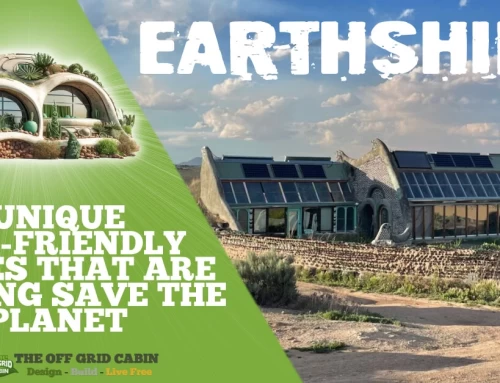

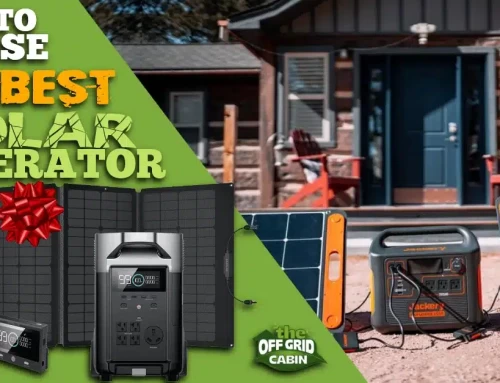

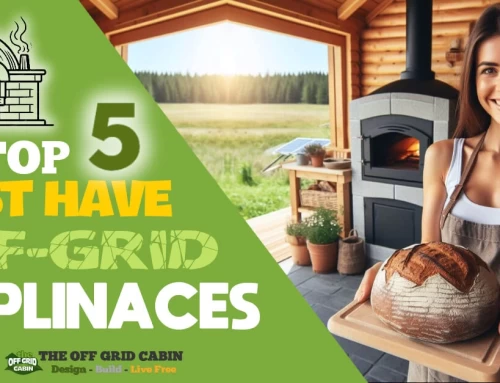

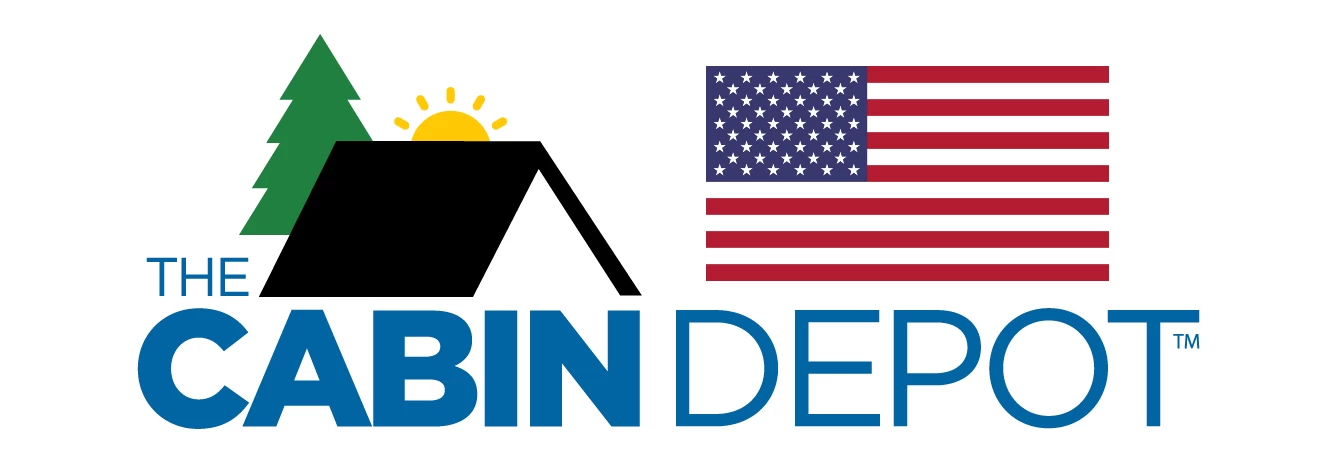
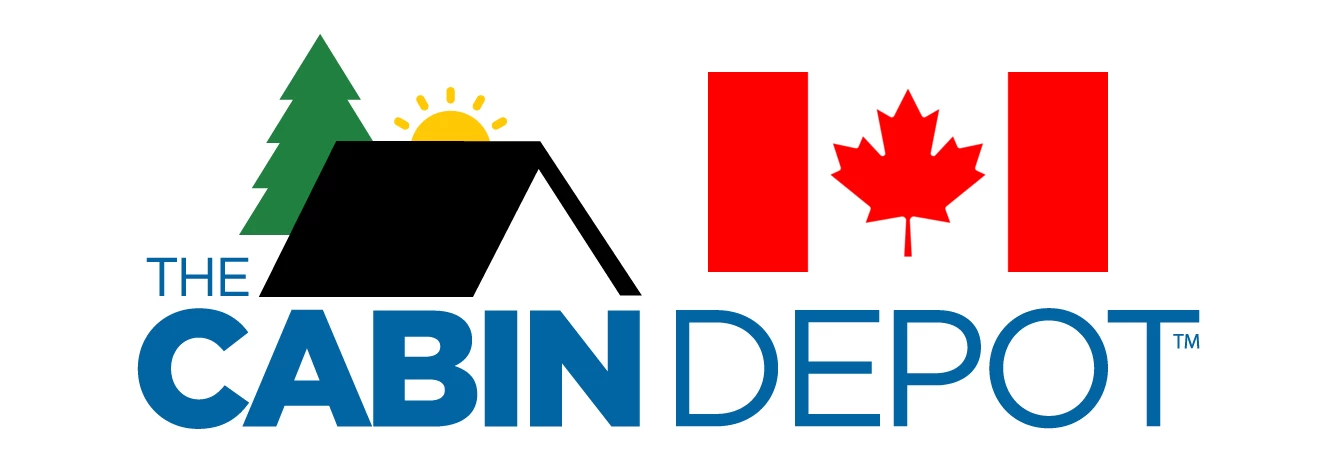
Leave A Comment